Bridge, Don't Divide: Navigating Generational Customer Differences
Discover how to navigate generational differences, balancing automation with human connection for 21st-century customer experiences
Topics
What to Read Next

Discover how to navigate generational differences, balancing automation with human connection for 21st-century customer experiences

Joseph Michelli, the CEO of The Michelli Experience, is a renowned expert in customer retention. With a background in clinical psychology, Michelli shares his unique perspective on transforming customer journeys through personalisation. From his early experiences in healthcare to collaborating with iconic brands like Starbucks, Ritz, and Zappos, Michelli provides valuable insights into creating customer-obsessed cultures.
He also delves into the evolving landscape of customer behaviour across generations and offers practical advice for business leaders seeking to balance automation with human connection in customer interactions. This conversation is a treasure trove of wisdom for anyone looking to enhance their customer experiences in the 21st century.
Excerpts from the interview:
I had the good fortune of studying clinical psychology in a systems context, which allowed me to gain insight into how family and organisational systems function. After completing graduate school, I began my career as a clinical psychologist. During this time, I gradually advanced within the healthcare system and became involved in organisational development, assisting multiple hospital systems in collaborating for a more seamless patient experience.
This experience sparked my keen interest in enhancing patient service, as it was referred to at the time. I delved into standardisation techniques such as templates and similar approaches. Eventually, I transitioned out of healthcare due to other enticing opportunities. One notable experience was my involvement with the Pike Place Fish Market in Seattle, Washington, where the unique practice of fish tossing became a significant part of their customer engagement. This journey was chronicled in my book When Fish Fly.
Subsequently, I had the privilege of working closely with other renowned brands, including Starbucks, which led to the publication of my first book, The Starbucks Experience. From there, my professional journey has been characterised by numerous consulting engagements, resulting in the authorship of several books detailing the experiences and insights gained from working with various clients.
First-party data is incredibly valuable. It encompasses the information your customers provide, effectively inviting you to understand them better to enhance their overall experience.
You can glean some insights from their behavioural patterns, while for others, it’s as simple as asking them directly. Currently, I’ve been actively engaged in various customer groups focused on journey mapping. After each session, we administer a questionnaire to delve into aspects such as their lifestyle, preferred sources of information, online activities, and the apps they use on their phones. These details are crucial for crafting comprehensive customer personas, ensuring you’re not solely reliant on demographic data but also generating your own.
While there are alternative methods to acquire this information, capturing what your customers do within their relationship with your brand and seeking their input is vital and empowering. It enables you to tailor distinct experiences based on these personas.
We’re all striving to create a customer experience that encourages them to return and refer their friends. The brands I write about are typically known for a few key aspects. Firstly, they excel in providing a world-class customer experience and in how they treat their employees.
These are usually brands that have effectively engaged their team members, who engage their customers. One can learn from their customer-centric approach, understanding that people generally want to do right by customers. While the occasional difficult customer interaction may momentarily affect their attitude, businesspeople typically aspire to more than just making profits.
They want to reflect on their careers and say they made a meaningful impact on people’s lives. They see themselves as part of communities, striving to uplift those around them. Obsessed brands communicate a vision for how they can elevate their communities and make a positive difference that transcends simple transactions.
They believe there’s an opportunity for greatness in this place, and they’re steadfastly committed to it. Thus, they consistently emphasise the company’s purpose. Furthermore, it’s crucial to engage employees in conversations about what they want their lives to stand for. What lasting impact do they aim to leave? How does aligning with our journey connect with their mission?
While consistently championing the organisation’s mission, these exceptional brands also take the time to help individuals bridge the gap between their purpose and the organisation’s mission. This is the crux of the matter.
They also recognise that while customer experience is pivotal, it can’t be everything and nothing all at once. To avoid dilution, they work to create a manageable framework addressing people, processes, and technology. They establish a rational approach to understanding and leveraging customer information while ensuring it remains at the forefront of team members’ minds.
They actively seek input from customers and team members, maintaining a constant feedback loop. By keeping it as straightforward as possible and focusing on a few critical areas, they effectively distinguish themselves as customer-obsessed brands, as opposed to those that merely pay lip service to the concept but lose sight of it amidst other concerns.
There are inevitably differences between generations, and it’s important to pay attention to them. However, sometimes, we tend to overestimate these differences and inadvertently create divisions among people.
What we need to do is study our customers, and generational factors are just one component of that. Within any generation, you’ll find individuals with very different motivations and value structures. When discussing gender differences, it’s crucial not to reinforce stereotypes.
I follow the research of a strong group out of Stanford that delves into generational disparities. From what we know, value-based issues are a significant part of the Gen Z worldview. They prefer engaging with companies that have a clear and active purpose.
I’ve noticed a more communal, practical, and collaborative mindset in this generation compared to those that came before. As a general rule, Gen Z seems to navigate the digital world more easily, being digital natives. They seek smart technologies that enhance their quality of life, viewing them as tools. They are open to transitioning from one platform to another if better options arise.
While they still value human service, it doesn’t necessarily have to be at the forefront. However, it’s worth noting that for every trend we observe, there are exceptions. I have kids who belong to Gen Z, and one of them is particularly invested in delivering exceptional human experiences.
The key takeaway is to truly understand your customers rather than merely categorising them based on demographics. There are diverse life experiences within any generation, so it’s crucial to approach each individual with this in mind.
The first skill you need to develop is a thorough understanding of the tool. AI is an incredible resource, and it’s crucial to comprehend its capabilities. It’s wise to harness the full potential of this tool for tasks it excels in, surpassing human capabilities. It’s equally vital to acknowledge that, in its current form, AI cannot entirely replace human input.
This tool is a potent force for personalisation rather than establishing a personal connection. It allows me to understand you based on the data it processes, a level of insight I couldn’t achieve. It empowers me to handle extensive datasets about your behaviour, which is impressive and invaluable. This enables me to discern your preferences.
I can also grasp how you responded to my service delivery and other occurrences in your life. This provides a significant advantage in tailoring and delivering service. It allows me to automate experiences that would otherwise be impractical. Moreover, it allows for removing human intervention in situations where its value is not fully recognised. However, it’s crucial to note that, as of now, this technology could be more intuitive. It requires human intuition.
It necessitates human creativity to develop fresh, innovative solutions based on behaviour patterns. It demands human warmth, smiles, genuine care, and the demonstration of real empathy and compassion. In my opinion, the critical factor is to excel in emotional intelligence and let artificial intelligence excel in what it does best—leveraging its capabilities in ways beyond our human capacity.
I’ve been advocating for the concept of a 21st-century company long before the surge in AI technology. It’s about creating an organisation that leverages technology while valuing the power of human interaction. By doing so, we ensure we have the right technological infrastructure for those who prefer minimal human contact.
While we do observe buyer journeys, particularly among Gen Z, that lean towards a fully digital experience, there’s still a significant portion, including people of my generation, who appreciate reducing human interactions. Therefore, we must accommodate both preferences.
It’s essential to optimise the entire process for seamless technological integration. Individuals seeking convenience should find a technologically-driven journey readily available. Additionally, I advocate for a high-touch experience for those willing to pay more for a deeper human connection.
This dual approach should be the foundation of your customer journey. Recognise that most customers will fall somewhere in between, shifting between technological and human touchpoints. It’s crucial to identify the pivotal moments and offer both options for your customers.
While this advice may seem straightforward, it’s important to acknowledge that its implementation is a dynamic process. Adapting to evolving technologies and the changing needs of your customer base is a continuous effort that requires refinement.
Khushbu is a Senior Correspondent and a Content Strategist with a special foray into MarTech and CX. She has been a keen researcher in the tech domain and is responsible for strategising social media scripts to optimise the collateral creation process.
View More

Locala’s omnichannel advertising platform leverages granular insights and cutting-edge AI to help marketers plan, activate, and measure campaigns that are personalised to the local consumer. It specialises in transforming complex mobility and consumer data into actionable audience insights, fueling advanced media strategies.

Qualaroo is a saas-based online survey creator offering Qualaroo Nudge, a proprietary technology for uploading custom properties for airtight targeting. It enables marketers to ‘nudge’ when user clicks on a page element, helping them to target visitors on their real-time activity.

Zendesk is a Danish-American company that offers software-as-a-service products with the capabilities of omnichannel integrations. Its omnichannel messaging platform enables sales and marketing teams to easily track and consolidate customer tickets from various sources, ensuring enhanced customer experiences.

WebEngage is an all-in-one marketing platform that integrates omnichannel engagement with live analytics features. It offers AI/ML-driven product recommendations engine that enables marketers to boost conversion for all channels, including the web and mobile apps.

Sprinklr is a comprehensive enterprise software company offering omnichannel support capabilities for all customer-focused marketing functions. It provides no-code, easy-to-build API integrations to access real-time customer data from multiple sources — such as CRM, CDP and ecommerce platforms.

SAP provides omnichannel marketing capabilities through its flagship product: SAP Emarsys. By accessing its purpose-built reports, teams can determine the effectiveness of their marketing campaigns, segments, and channels in achieving sales goals. Its B2B account engagement features let brands deliver predictable and personalised marketing-led B2B insights at scale.

MoEngage is a global AI-driven marketing platform that enables brands to orchestrate omnichannel campaigns from a single intuitive interface. Utilising MoEngage’s User Path Analysis capabilities, marketing teams can target customers across 10+ channels, depending on their purchase behaviour.
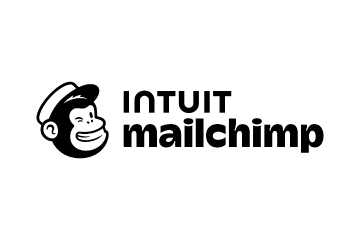
Intuit Mailchimp is an AI-powered omnichannel platform that offers email and marketing automation functions. With its customised pre-built audience segments, marketers can scale their campaigns based on individual contacts’ demographic information and shopping behaviour.
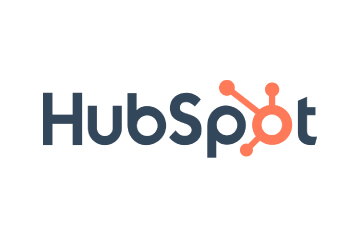
Hubspot is a cloud-based, scalable customer platform that offers various marketing automation solutions with omnichannel support capabilities. It enables marketers to create omnichannel campaigns to connect and interact with customers across multiple channels in real-time.

Clevertap is a comprehensive platform that allows global marketers to get unified customer data analytics and omnichannel engagement in one place.

Bloomreach is an all-inclusive marketing automation platform that comes with omnichannel orchestration supports for various use cases, such as marketing campaign personalisation, and headless CMS commerce platform experience.
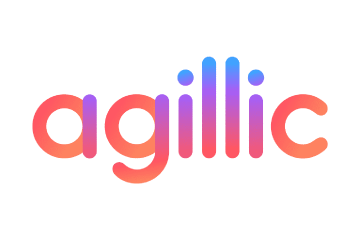
Agillic specialises in offering global brands a comprehensive Omnichannel Marketing Automation Platform that enables them to create personalised marketing campaigns. Its multichannel marketing capabilities support multiple integrations, such as Playable and Sleeknote for lead generation, Zapier for automating routine processes, among others.

Adobe Experience Cloud features Adobe Campaign, enabling marketers to synchronise their customer data from various channels for omnichannel marketing. By leveraging its omnichannel integration with Adobe Journey Optimiser, brands can build multi-step journeys, campaigns, and personalised real-time moments that follow their customers across channels.

ActiveCampaign is an intelligent multichannel marketing automation platform that enables marketers to seamlessly connect campaigns across the channels that matter most to them. It helps enterprises streamline personalised marketing, transactional emails, and one-to-one CRM interactions throughout the customer lifecycle.

UiPath offers a comprehensive AI-powered robotic automation platform, enabling marketers to streamline recurring functions, such as lead automation and customer engagement. Utilising its capabilities, marketers can personalise and automate customer interactions, depending on their needs and preferences.
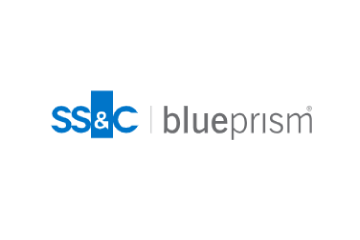
Blue Prism is a global software provider, offering ROM 2, an intelligent automation implementation methodology that empowers teams to scale their digital workflow. One of its use cases is sales and marketing solutions, which is powered by artificial intelligence (AI) and machine learning (ML) algorithms.
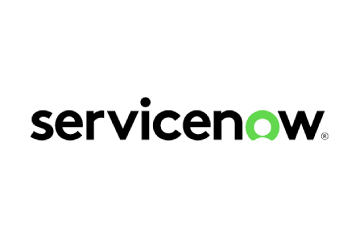
ServiceNow features Robotic Process Automation Hub (RPA Hub), a scalable genAI-powered platform for orchestrating and managing a robotic workforce to execute various business processes. Its workflow automation enables tasks like lead management and campaign execution and supports integration with popular marketing tools to streamline processes.

SAP is a composable marketing automation technology provider, offering SAP Intelligent RPA solutions to automate repetitive, rules-based business processes, including marketing and sales. Using its tech stack, marketers can automatically extract product data from manufacturers’ websites, update online inventory and import website and email sales.

Pega is a combined business process management and robotic process automation (RPA) platform that comes with workforce analytics features. It offers a wide variety of tools such as Pega Email Bot to automate repetitive tasks with personalised customer replies at scale.

Microsoft offers Power Automate, a low-code and AI-powered RPA software that helps marketers streamline tasks like lead management, email campaigns, social media management, data analysis, content publishing, and customer feedback. Leveraging its capabilities, businesses can automate repetitive tasks, such as lead capture and email marketing workflows.
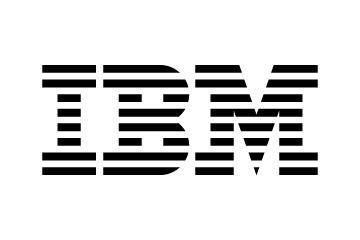
IBM offers AI-powered Robotic Process Automation capabilities for CRM and marketing functions. It enables users to automate workflows with integrated OCR and intelligent chatbots, distribute work across multiple bots without human interventions and manage emails via low-code authoring tools.

Hyland offers an AI-powered comprehensive robotic automation software suite, enabling marketers’ teams to automate their campaigns. Its Natural Language Processing (NLP) technology allows businesses to automate repetitive marketing functions, such as execution of targeted and personalised strategies in near real-time.
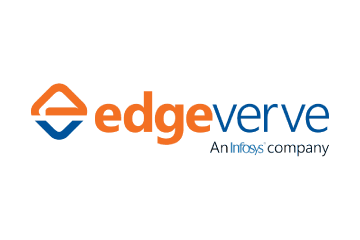
EdgeVerve, a subsidiary of India-based IT company Infosys Technologies, offers RPA software for major enterprise companies. Its AssistEdge Robotic Process Automation provides machine learning and AI tools called Infosys Nia. Its AssistEdge RPA enables global marketing and distribution companies to automate 970+ manual tasks at scale.

Datamatics is an intelligent automation platform, offering TruBot RPA designer, a low-code bot design tool for marketing teams to create customised bots quickly. It provides 500 pre-built components, enabling low-code design and rapid deployment capabilities with drag-and-drop options.

Automation Anywhere offers Automation Success Platform powered by Vertex AI, enabling enterprises to develop a cloud-based digital workforce at scale. Leveraging its bots, ML, and AI technologies, marketers can automate their marketing and sales processes. One of its popular offerings is Automation Co-Pilot, a genAI-powered assistant that empowers businesses to create and summarise content.

Appian is a global technology provider, delivering end-to-end process automation with RPA, AI, IDP and API integrations. Utilising the readily available APIs of this low-code platform, teams can create a series of connected digital business applications including customer management and marketing.

Powered by Zoho Corporation, Zoho Analytics enables marketers to track all critical metrics in a single platform to enhance marketing outcomes. The company offers 75 pre-built data visualisation reports and dashboards on marketing performance for collaborative analysis. With its AI-powered assistant, marketers can generate automated insights, predict future trends, and configure smart alerts.

Semrush is an online visibility management and content marketing SaaS platform, offering marketing analytics tools to global businesses. Its open-source analytical tools include Market Explorer and Traffic Analytics for understanding market trends and website traffic respectively.
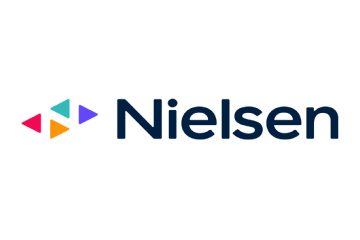
Nielsen is a global audience insights, data and analytics solution provider, helping marketers measure what people listen to and watch. It offers a comprehensive, AI-powered Nielsen Marketing Cloud platform with sub-products such as Audience Segments, Scarborough, and Advanced Audiences to understand audiences for different targeting initiatives.

MoEngage is a full-stack marketing automation platform, offering consumer insights and analytics solutions for marketers to understand customer LTV. With MoEngage Analytics, they can measure user engagement, spot behavioural patterns, and act on retention to prevent app uninstalls.

Microsoft Clarity is a behavioural analysis tool that helps marketers understand user interaction with their website. It supports features like Session recordings, Heatmaps, and ML insights in real time. Processing more than a petabyte of data from over 100 million users per month, Clarity accommodates limitless traffic for various marketing measurements at scale.

Powered by AI-led insights, Merkle offers scalable marketing analytics and CX technology solutions, helping brands to optimise their campaigns. Some of its flagship solutions are Measurement & Media analytics, Consumer & Experience insights, and Product & Market intelligence.

Hubspot offers marketing analytics and dashboard software, enabling businesses to make data-backed decisions for use cases, such as revenue generation, site analytics and detailed reporting. Leveraging the capabilities of its multi-touch revenue attribution model, marketers can monitor real-time website traffic via unique tracking codes.

Google Analytics is an open-source analytics tool by Google, enabling marketing teams within organisations to better understand their customers via valuable insights. Consequently, businesses can use those insights to take action, such as website improvement and tailored audience list creation.

Deliotte offers Ncyte, an all-in-one analytics solution. Utilising patented algorithms, proprietary data models and predictive analytics, Ncyte delivers actionable insights for various marketing functions. With Nycte, data and marketing teams can pre-define events such as attributed campaign performance to evaluate their efforts with live notifications.

CleverTap is a customer engagement and retention platform that offers the functionality to integrate app analytics and marketing. Powered by TesseractDB, a purpose-built database for engagement & retention, it combines the features of audience analytics, omnichannel engagement, and product A/B testing for marketing functions.

Adverity is an integrated data analytics platform, enabling marketers to automate their customer’s data integration and visualisation functions. It offers 600+ pre-built data connectors to popular marketing platforms, social media networks, SEO tools, and marketing automation solutions. The platform also provides pre-build dashboards to generate tailored reports.

Adobe Experience Cloud offers Adobe Analytics and Adobe Target within its analytics tools solutions, enabling marketers to execute in-depth analysis of their customer data. Adobe Analytics allows the sales and marketing teams to mix, match, and analyse data from any digital point in the customer journey.

Ahrefs features a suite of analytics tools under its Ahref Enterprise offering. It offers API and Looker Studio connectors, enabling marketing teams to elevate their SEO strategy with enterprise-grade and insights. Some of the criteria for its API endpoints include Backlinks, Organic & Paid Traffic, SERPs, Website health score and more.

StackAdapt is a multi-channel programmatic advertising platform, enabling digital marketers to customise their strategy. It offers open and flexible DSP (Digital Signal Processing) capabilities for executing tailored ad campaigns. Furthermore, its ad previewer lets marketing teams preview video, display and native ads on desktop or mobile across 500+ publishers, covering 23 verticals.

Rakuten is a global affiliate ad technology company, enabling advertisers to optimise their marketing strategies with data-driven insights. It offers AI-powered forecasting and benchmarking capabilities and dynamic multi-touch commissioning tools, allowing advertisers to customise their campaigns. It also supports first-party data collection integrations for both B2B and B2C marketers.

Oracle Advertising and Customer Experience (CX), lets advertisers personalise their campaigns. Its flagship product, Oracle Moat, a comprehensive analytics and measurement platform, provides a suite of solutions across marketing and ad intelligence. Moat helps reach prospective customers, capture consumer attention, and measure the outcomes to unlock business potential.

Nielsen offers Nielsen Ad Intel, a cross-platform advertising intelligence platform with actionable insights to identify prospects, analyse brand strategies and learn from past advertising campaigns. It offers various advertising intelligence features such as ad spend monitoring, competitive benchmarking, global competitive insights and expert data harmonisation.

Meta Ads is a social media advertising platform leveraging the user base from Facebook, Instagram and Whatsapp to deliver personalised ads at scale. It offers Meta Business Suite and Meta Business Manager for managing and tracking ad performance. Utilising its AI-powered tools, advertisers can partially or fully automate with complete control over their ads.
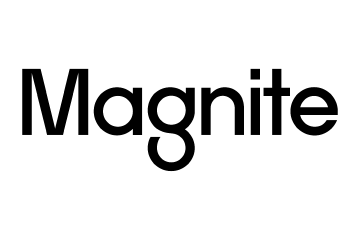
Magnite is an independent sell-side advertising technology provider, enabling publishers to monetise their content across all screens and formats. It offers Magnite Streaming, a singular supply-side platform that merges technology from the Magnite CTV and SpotX platforms. Utilising this functionality, marketers can identify their potential audiences to restructure their targeting strategies.
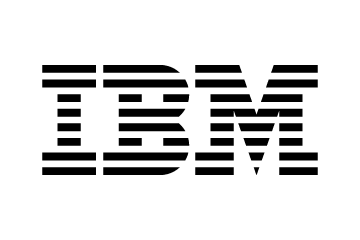
IBM offers a comprehensive suite of Watson Advertising to agencies and marketers. With Watson Advertising’s AI-powered assistant, advertisers can customise their advertisements, based on real-time ad results. It also supports functionalities of cookieless advertising, ad fraud management and brand safety measurements.

Google features a comprehensive list of AI-powered Ad tools under its Google Ads offering. Some of its popular tools include Keywords Planner, Ads Editor, Reach Planner, Ads Mobile App, Insights Finder, Ads API, and Recommendations Page. Additionally, it offers Google AdMob to help businesses plan their in-app revenue generation strategy.

Criteo is an all-in-one connected commerce media platform, enabling marketers and agencies to scale their digital and physical assets. Leveraging the capabilities of its AI-powered technology, brands can develop strategies for intent-based product recommendations, multi-prolonged accessibility, contextual advertising, and more.

Basis Tecnologies (formerly known as Centro), is a programmatic advertising platform, offering ad management tools for search, social and site direct via a single interface. Its flagship products are Basis Assistant and Basis Automate+. Basis Assistant is a Chrome extension, connecting 20+ platforms and tools, and Basis Automate+ is a digital advertising automation tool for simplifying campaign process.

AppsFlyer is a mobile attribution company, helping mobile advertisers to identify their ad network. It offers a measurement suite, giving app marketers full visibility into their customer journeys while preserving their privacy. Utilising its AI-powered Creative Optimisation platform, marketers can formulate their creative strategy.

Adtriba is a cross-channel digital marketing management platform based on data-driven attribution modelling. Its solutions include Adtriba Triangulation, enabling advertisers to witness the integration of diverse measurement methods, such as Marketing Mix Modelling (MMM), Multi-Touch Attribution (MTA) and Incrementality Testing.

Adobe Experience Cloud offers connected advertising solutions with its natively integrated Adobe Advertising platform. Its consultancy-based reporting options come with AI-powered optimisation features, helping advertisers analyse their ad performance via 200+ measurement metrics. Utilising its connected TV (CTV) and search, social, and commerce tools, marketers can optimise their customer acquisition strategy.

Yellow.ai specialises in Conversational AI, generating autonomous conversations that appear human-like. These conversations form the foundation of brand engagement. Their AI-powered, no-code Dynamic Automation Platform manages around two billion conversations from a multitude of channels in numerous languages.

Wotnot is a genAI-powered, no-code chatbot platform, helping the sales and marketing team to engage with visitors on their website via personalised conversations, catering to their lead-generation goals. It offers platform-based solutions, such as AI Studio, a GPT chatbot builder, and an analytics dashboard.

Sprinklr offers a comprehensive suite of 250+ AI-intent bot templates for various industry verticals to accelerate bot development. Its specialised AI and compliant rule engine enables marketers to modify and automate their promotional campaigns for better engagement via suggestion-based personalised bots.

Meta’s new class of generative AI features and creative tools allow users to create and share custom stickers or update the visual style of their photos with a simple text prompt. They can also chat with 28 different AIs and get unique perspectives on topics like travel, games and food.
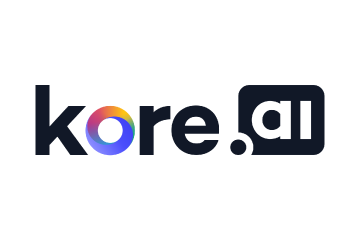
Kore.ai is a UI-based platform that allows marketers to create a chatbot quickly and deploy it easily on multiple channels. Leveraging the capabilities of its conversational builder, enterprises can build the Dialogflow using dialogue messages. Some of its popular offerings include XO: Experience Optimisation and GALE(Beta).

IBM watsonx Assistant is an interactive virtual agent that utilises natural language and AI, enabling users to set it up on their app and website. It offers fast and accurate responses to customers, enhancing their overall experience and satisfaction with its adaptive learning capabilities.
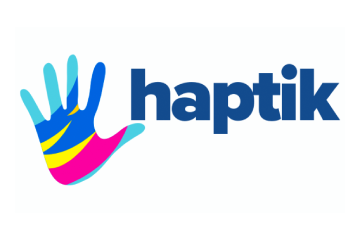
Haptik helps enterprises manage their customer lifecycle with generative AI-powered conversational solutions to boost marketing and sales. It offers Contakt and Interakt to enhance overall CX, where Interakt enables marketers to send hyper-targeted and personalised campaigns to drive customers to take action on WhatsApp.

Dialogflow is an all-in-one platform for developing chatbots, voice bots, and virtual agents using natural language understanding and Google AI. It helps marketing teams create conversational agents that can handle common customer requests and issues, such as FAQs, and order status at scale.

Dialpad is a fully integrated unified conversation intelligence platform that utilises ongoing ML(Machine Learning) algorithms and does not require coding to configure a chatbot. It offers real-time insights and tips, helping marketing teams customise their approach for every customer.
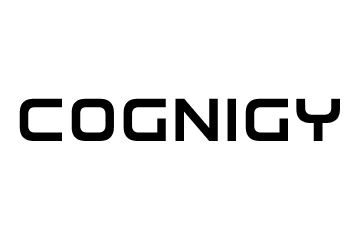
Cognigy.AI is a low code-no code, enterprise-grade generative AI platform offering readily available LLMs for CX transformations. Its omnichannel reporting and analytics suite for marketing enables organisations to streamline their customer journeys.
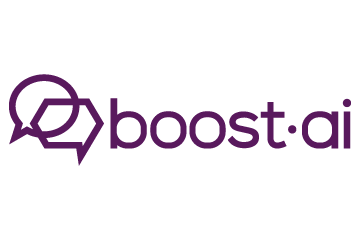
boost.ai is a global conversational AI technology provider optimised for operational efficiency at scale. It offers self-learning AI capabilities that emphasise Natural Language Understanding (NLU) along with intent suggestions.
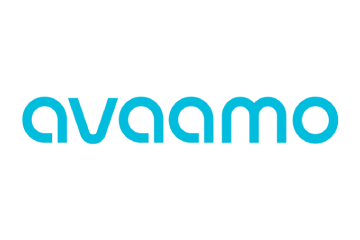
Avaamo is an all-in-one conversational AI platform for enterprises offering a suite of industry-specific skills developed to automate and resolve common use cases. It offers Outreach, which enables marketers to educate and engage with customers across existing touchpoints through proactive and personalised communication.

Amazon Lex offers fully managed conversational AI interfaces with advanced natural language models to design, build, test, and deploy conversational interfaces in applications. It enables sales and marketing teams to automate user tasks in their applications like the CRM and across any digital channel.

Aisera is a generative AI platform provider that offers AI Copilot, AiseraGPT, and AiseraLLM for various domains. With Aisera, enterprises can accelerate the development of their LLMs or purchase ready-to-use generative AI solutions with pre-trained LLMs using customer data to reduce hallucinations.

Zendesk is an AI-powered customer feedback software provider, offering customer satisfaction (CSAT) software to businesses across multiple industries. Its marketplace offers 1600+ apps and integrations, enabling marketers to create a complete customer feedback system.
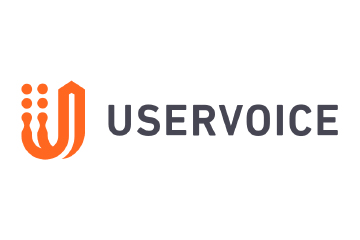
UserVoice provides product feedback management software for SaaS businesses. Its UserVoice Validation tool delivers actionable user insights to inform roadmap strategy. From testing ideas to ensuring satisfaction with released features, it helps research and marketing teams gather quick user feedback throughout the entire product lifecycle.

UseResponse is a fully customisable customer support and feedback software, helping companies to better understand the needs of their customers. It provides the capabilities of multichannel ticketing, live chat with messengers aggregator, chatbot, feedback community portal, and knowledge base.
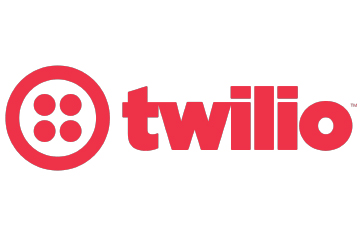
Twilio provides integrated Mindful Feedback functionality within its Flex offering, enabling marketers to automatically take action based on real-time customer feedback. It automatically collects customer feedback after Flex interactions by capturing feedback over post-call voice IVR, outbound voice IVR, conversational SMS, Web SMS, email, and web surveys.

Trustpilot offers ML and AI-powered feedback management tools, helping marketers build trust and loyalty through customer reviews. Its AI-driven Review Insights tool enables marketers to identify growth areas from negative feedback, whereas its Image Generator tool lets them enhance social media engagement.
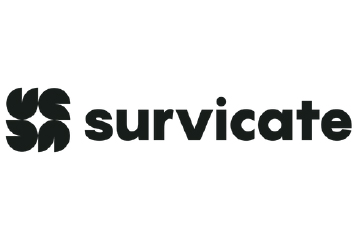
Survicate is a drag-and-drop, multichannel survey builder, helping brands effortlessly collect and analyse customer feedback. It offers 23+ one-click, native integrations, enabling advertisers and marketers to create follow-up campaigns based on real-time customer feedback.
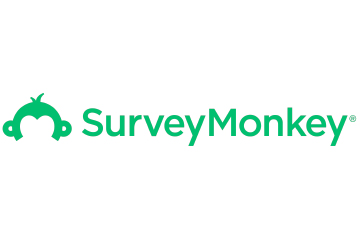 Survey Monkey is a global online survey and forms tech stack provider, offering AI-fueled market research solutions to businesses. Its enterprise feedback management program provides 250+ templates with the capabilities of customisation, allowing organisations to build tailored survey forms.
Survey Monkey is a global online survey and forms tech stack provider, offering AI-fueled market research solutions to businesses. Its enterprise feedback management program provides 250+ templates with the capabilities of customisation, allowing organisations to build tailored survey forms.

Sprinklr is a unified customer experience platform (CXM), offering AI-powered feedback management capabilities with its flagship product: Sprinklr Surveys. It integrates solicited customer feedback with unified-CXM data, enabling brands to derive meaningful, actionable insights. Utilising its genAI-powered survey builder, marketers can create conversational surveys to streamline their NPS strategies.

Salesforce is a comprehensive customer-oriented technology provider offering a feedback management suite. Salesforce’s survey responses help marketers create personalised surveys based on their existing customers’ data. Some of the supported applications of its feedback management platform are genAI-powered survey form development and sentiment-insights-based survey collections.

QuestionPro is an online feedback software provider, offering ready-made survey templates to businesses across 40+ countries. Leveraging the capabilities of its customer satisfaction templates, advertisers and marketers can create and gather tailored questions.

Qualtrics is an all-in-one customer experience solution provider, offering website & app feedback tools for organisations to collect customer feedback efficiently. Its digital experience analytics capabilities combined with DXA integrations, bring together verbal and behavioural data for in-depth analysis of user feedback.

Medallia is a comprehensive platform, enabling marketers to capture feedback from all customer touch points. Some of its popular feedback management software capabilities include Sense360 for analysing consumer spending, Medallia Video to automatically extract meaningful insights from customer’s feedbacks and Agile Research for creating branded surveys in real-time.

HubSpot is a one-stop marketing platform, providing customer feedback software under its Service Hub offerings. Its pre-built APIs include net promote score (NPS), customer effort score (CES), and customer satisfaction (CSAT) surveys, allowing marketers to strengthen their customer loyalty strategy.

Zeotap lets brands integrate, unify, segment and orchestrate customer data, fostering a cookieless future. It offers a “Non-Customer Entity Data” feature that helps marketers to integrate both customer and non-customer entity data.

WebEngage is an end-to-end customer data platform, helping brands to strategise their customer engagement and retention functions. It supports third-party integration for use cases including customer segmentation, omnichannel engagement, and survey & feedback.

Twilio provides, Twilio Segment, an AI-powered CDP, enabling marketers to streamline their personalised customer engagement journeys. It brings together clean, consented customer data for real-time insights with 450+ pre-built connectors.

Tealium is a comprehesive customer data platform helping brands orchestrate and manage their data activation from a marketing standpoint. Its AudienceStream CDP functionality enables marketers to create custom campaigns via 1300+ integration options for several use cases.

Syntasa provides data-ready CDP capabilities, equipping marketers with essential tools to prepare their customer data. It offers real-time sentiment analytics capabilities, helping enterprises derive behavioural insights from unified user profiles to foster hyper-personalised experiences.

SAS offers embedded CDP capabilities, letting marketers unify customer data, understand digital activity and enable analytically driven, real-time activation. It comes with data activation facility that enables marketers to pull only the data they want, further reducing data migration costs.

SAP is a company-wide customer data management platform, helping marketers improve engagement, conversion, and retention. It offers a genAI-powered data model, enabling enterprises to unify their B2B and B2C customers’ profiles to reach their personalisation goals.

Salesforce is a global technology provider, offering low code/no-code, AI-powered capabilities. Marketers and advertisers can harness its technologies for multiple use cases like B2B strategies, cross-channel personalisation, real-time analytics, and more.

Oracle is a global database management company, providing CDP solutions, under its flagship product: Oracle Unity. Its AI-powered models enable marketers to create hyper-personsalised campaigns with predictive insights by streamlining real-time customer data from heterogeneous sources.
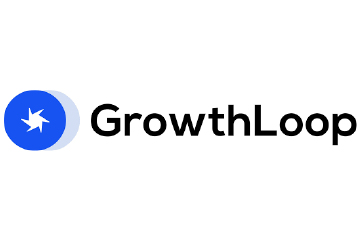
Growthloop is a composable CDP platform, allowing marketing and sales team to action their data at scale. It offers GrowthLoop Audience Builder, enabling marketers to initiate their lead generation functions.
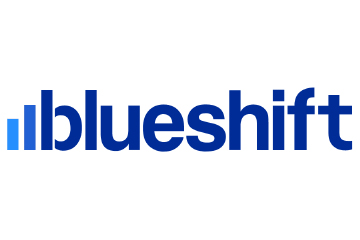
Blueshift is a scalable CDP platform that offers AI-driven capabilities for clubbing real-time events with related data from various sources. It streamlines these insights into unified customer profiles, enabling marketers to automatically personalise their targeting goals.

Adobe Experience Cloud offers a real-time CDP, letting users create high-value audience segments for B2C and B2B use cases across their marketing funnel. It follows a cookieless marketing approach to automatically unify customer data across various online and offline channels in real-time.

ActionIQ is a composable CDP platform that offers audience segmentation, acquisition marketing, and Customer 360 capabilities. It integrates analytical tools, enabling marketers to collect and analyse their first-party customer data at scale.
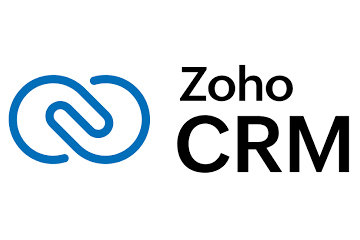
Zoho CRM leverages automation and comprehensive analytics to empower any sales team, fostering stronger customer loyalty. Ideal for both small businesses and enterprises, this software enables enhanced productivity and tailored solutions through predictive intelligence.

Zendesk offers Zendesk Sell, an easy-to-deploy CRM platform that is simple to deploy and navigate, catering to businesses of any scale. Its mobile-friendly Sell app has the functionalities of geolocation, helping sales and marketing teams. Offering an all-in-one CRM platform, organisations can implement use cases like prospecting, engagement, lead generation and communication capabilities.

SugarCRM is a global CRM software provider, helping marketing, sales, and service teams improve efficiency through automation, data, and intelligence in near real-time. It offers Sugar Market, an all-in-one marketing automation platform that helps marketers to automate their campaign with higher ROI.

SAP Sales Cloud comes with end-to-end solutions and offers AI-fueled insights for understanding customers’ preferences. It helps build customer profiles at scale. It also empowers users to automatically manage contact information, which streamlines clients’ journeys.

Salesforce is a one-stop sales and support CRM software that regularly updates customer records, tracks emails and calls, and creates organised support processes for quicker customer responses. Its simple and scalable infrastructure is ideal for businesses of all sizes.

Pipedrive stands out with its emphasis on automation, tailorability, and seamless integration. Purposefully built to enhance the efficiency and productivity of sales professionals, this CRM solution has an intuitive setup and robust capabilities. It facilitates lead generation, comprehensive sales analytics, and seamless business expansion.
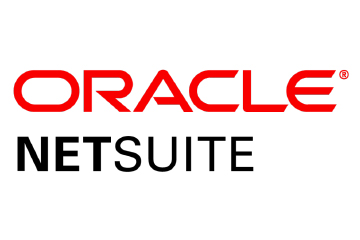
Oracle NetSuite CRM, a component of Oracle’s business software suite, is for all midsize and booming businesses that want a comprehensive, integrated CRM solution with ERP capabilities. Using it, customers and partners can directly interact with the platform, freeing the additional work load for their sales team.

Microsoft Dynamics 365 Sales represents a robust cloud-based CRM solution brimming with features such as pipeline assessment, relationship analytics, and conversational intelligence. It utilises AI-powered insights to provide actionable intelligence via predictive analytics, lead scoring and sentiment analysis.

Less Annoying is a CRM software that utilises a straightforward search feature within its contact management system, making it easy to track contacts. It is ideal for small-sized businesses and offers a highly intuitive and user-friendly interface.
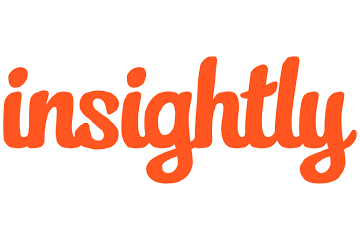
Insightly offers CRM software solutions for enterprises looking to understand their audience data across various marketing functions. It integrates seamlessly with third-party apps, streamlining workflow automation, including bulk emailing and report generation.

HubSpot’s sleek dashboard with consolidated CRM tools simplify complex customer data, further transforming it into meaningful insights. Complementing typical CRM functionalities, HubSpot provides tailored options, including conversation intelligence and email monitoring.

Freshsales by Freshworks is an AI-powered software that streamlines the sales cycle by automating mundane tasks and personalising customer engagement. It generates quality leads and nurtures relationships by understanding visitor intent in real-time.

Developed for midsize enterprises and large organisations, Creatio offers end-to-end CRM software solutions, allowing users to manage sales, marketing, and services all in one place. For marketing professionals, it provides Marketing Creatio, an omnichannel marketing platform to orchestrate customer journeys and accelerate lead-to-revenue.
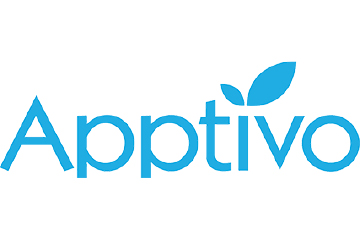
Apptivo delivers adaptable and web-based CRM solutions, enabling marketing and sales teams to streamline all customer service requirements across various devices and browsers. Despite its focused feature set, it encompasses over 65 interconnected applications alongside a robust sales pipeline management tool, ensuring efficient tracking of potential leads without any downtime.

Sitecore offers composable cloud solutions with its flagship products, Sitecore Experience Platform(XP) and Sitecore Experience Manager (XM). They help marketers to overcome scalability challenges. Some of its features include intuitive visual editing, headless delivery, marketing automation, scalable personalisation, data and machine learning capabilities.
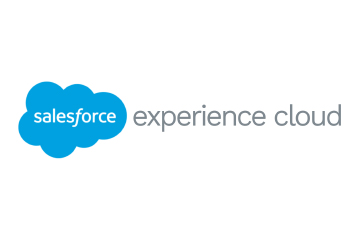
Salesforce Experience Cloud is a platform that helps enterprises link clients, partners, and employees to securely exchange information and documents. Built on its Customer 360 platform, Salesforce’s DXP ensures seamless integration with any solution in the Salesforce ecosystem.

Oracle Cloud offers a comprehensive suite of platform-based marketing automation solutions for personalised B2B and B2C automation campaigns. Some of its featured products are Eloqua Marketing Automation, CrowdTwist Loyalty and Engagement, and Unity Customer Data Platform.

Optimizely is a digital experience platform (DXP) provider that offers Optimizely One, an easy-to-use and fully integrated suite. It provides a single, unified workflow with thoughtfully embedded AI and machine-learning algorithms, accelerating work across the entire marketing lifecycle.

OpenText offers a cloud-native, scalable platform for enterprises to streamline their marketing functions. It provides fully composable content management, digital asset management, creative workflows, personalisation, targeting and customer data technologies in one place, ensuring a holistic approach to B2B, B2E and B2C experiences.

Neptune DXP is a PaaS(Platform-as-a-Service) provider, helping marketing teams build custom apps based on modular, reusable application building blocks. The company offers flexible environments to businesses across different verticals, further providing personalised digital solutions at scale.

Magnolia is a composable DXP that comes with no-code connector packs and low-code micro-frameworks for third-party integrations. It also offers an open-source version alongside its commercial plans enabling enterprises to build tailored use cases.

Liferay DXP helps marketers deliver personalised and connected digital experiences across a broad range of channels, including customer portals, websites, intranets, mobile apps, and connected devices. It offers intuitive CMS, user analytics, and site management tools that businesses need to launch, test and optimise digital experiences for faster go-to-market.
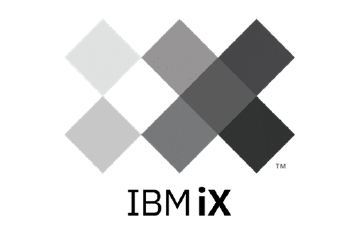
Powered by IBM Consulting, IBM iX offers a composable DXP, providing a comprehensive solution to make enterprises’ systems future-ready. Utilising its data-driven insights and intelligent workflows, marketers can design and deliver human-centred experiences across the customer lifecycle.

HCL Digital Experience (DX), forms part of a wider HCL Customer Experience (CX) product portfolio, offering core capabilities such as content management, DAM, CDP called Signals, and low-code application development. It provides services in government, life sciences, insurance, financial services, and other verticals.

Contentstack is a headless CMS and Composable Digital Experience Platform (DXP) solution provider that helps marketers gain a competitive edge. It recently launched into Google Cloud Marketplace, and is also available on Microsoft Azure and AWS. It seamlessly enables mid-market brands to adopt its omnichannel campaign engine to drive higher conversions and sales.

Bloomreach Commerce Experience Cloud provides businesses an edge with its modular capabilities: Content Management System (CMS), Discovery features for search and merchandising optimisation, and Engagement tools such as Customer Data Platforms (CDP) for personalisation and analytics.

Adobe Experience Cloud offers a comprehensive set of services specifically designed to address the day-to-day requirements for personalised customer experience at scale. Its platform helps manage different digital content and assets to improve customer satisfaction. Some of its products include Adobe Gen Studio, Experience Manager Sites, Real-time CDP, and Marketo Engage.

Acquia offers DXP solutions, comprising of two main elements: Acquia Drupal Cloud and Acquia Marketing Cloud. It can be accessed in both platform-as-a-service (PaaS) and software-as-a-service (SaaS) with additional components such as Site Factory for multisite management, digital asset management (DAM), CDP, personalisation, and Campaign Studio.

